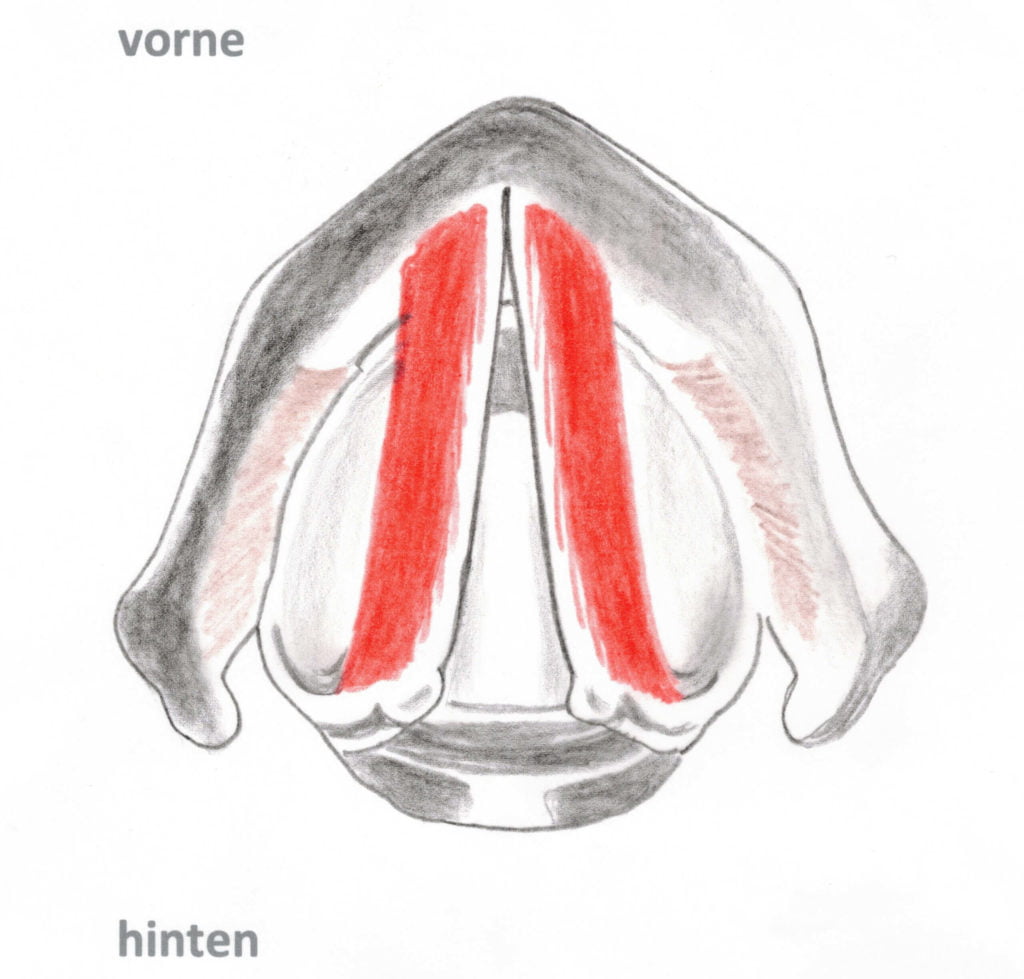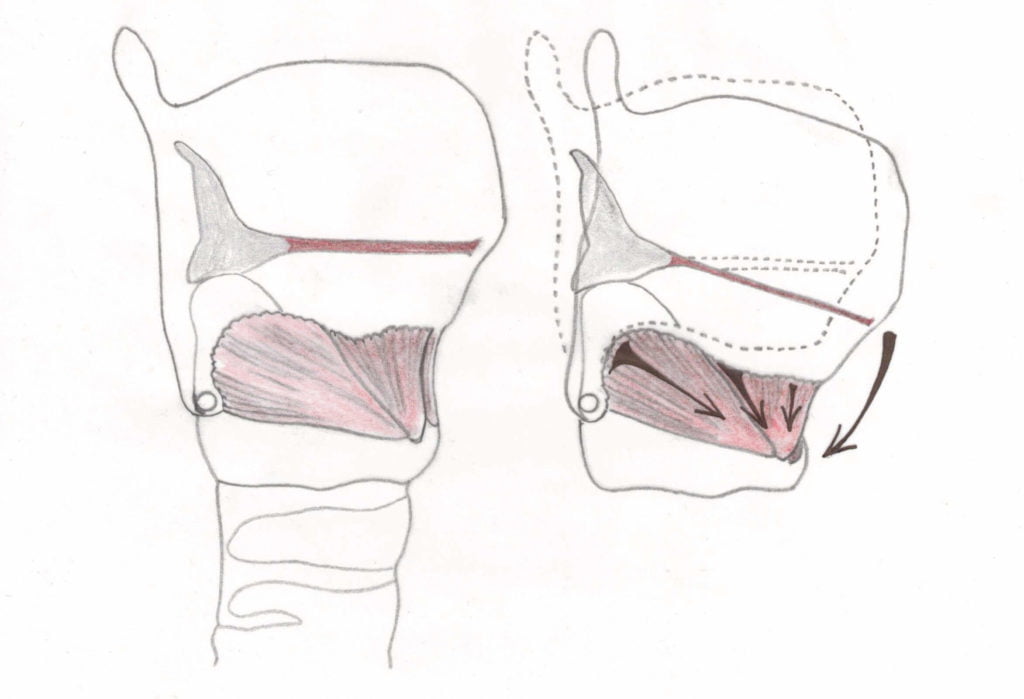Have you ever tried to sing like that: with a full voice in a high register? We hear it all the time in rock and pop music, soul, heavy metal or independent music: these high notes, full of power, passion, on the edge. This is "belting", a quality of sound or singing style that always captivates, electrifies or even ecstasises the audience.
In the early days of rock music, it was the long, high-pitched "Well" with which Elvis began his songs - and when he then hurled the first line at his audience: "I heard the news: there's good rockin' tonight", no one was sitting in their seats. It's still going on today. Check out Kelly Clarkson's music video below. Her belting part begins with the line: "But since you have been gone", and it is absolutely fitting that at this point the raging audience is faded in.
What "belting" is can be said in a few words: singing with the sound quality of speaking in a high register. How to do it: to belt properly, especially in a way that is gentle on the voice, cannot be explained in such brief terms. It is a demanding, coordinatively complex skill. In this blog post, we get to the bottom of this skill and its prerequisites, right down to helpful tips and practice suggestions.
Characteristics of Belting singing
"Singing from full throat and fresh chest" is a line in an old German song. "Belting" is just a newer word for a way of singing that has probably been around for thousands of years. In the early 20th century, the word became common in the USA to distinguish it from classical singing. Belting is an important vocal colour in popular music, can be learned and is now recognised as a legitimate singing technique ("legit singing"). Characteristics of belting singing in contrast to classical singing are:
- Bright, speech-like sound in a high pitched voice
- a text-guided approach to the song repertoire
- no continuous vibrato (rather as an effect)
Belting is often compared to speaking in a raised voice or shouting. In vocal pedagogy there is even the paraphrase "skillful yelling", but this is somewhat misleading. Belting is like shouting, but on the other hand it is not shouting or yelling, like a barker or sports reporter, whose voice can become rough or crack in extreme tension. In order to understand this crucial difference, we need to be aware of the vocal functions that are involved in healthy belting.
Singing with speaking voice quality: full vibration versus high-pitched chest voice
When a singer belies, she uses the sound quality of speaking. When we speak, our vocal cords are short and thick. In the drawing below you can see the muscle belly of our vocal folds as seen from above, coloured red. This is our vocal muscle, anatomically called the thyroarytenoid muscle, or TA muscle for short.

When we speak with a strong, confident tone, we bring our vocal cords together and tense the TA muscle. This shortens and thickens our vocal cords, causing them to vibrate at full width. This is the "full vibration" or, using the more common word: "chest voice" (because we feel the resonance of these deep, powerful tones mainly in the chest).
Associated with the high TA activity is a high closure rate of the vocal cords (similar to lips through which you blow a lot of air when you bubble). Their closing rate increases the higher you sing (to over 50 %). This creates strong harmonics beyond 4,000 hertz - a resonance that carries the voice far.
Over a little more than an octave (8 tones) we can speak in this full tone mode. If we go higher, we notice that the tonal space ends in which we can still speak comfortably, without tightness or pressure, with a full tone. If we continue to raise our speaking voice unchanged, we enter a transitional range (called "passagio") where speaking becomes laborious, more like strained shouting. And finally we reach a limit where we can no longer rise higher with a full voice.
At this limit, our voice either sags or it breaks and rolls over into the head voice. What happens here we can make clear to ourselves like this: While the vocal cords are stretched further with increasing height, the TA muscle can no longer maintain the high tension at full width at some point. Then the full vibration of the vocal folds breaks down and changes into a "marginal vibration" - the vocal folds become narrow and only vibrate at the inner edge. This is the "head voice" (so called because we feel its resonance mainly in the head). With it we can continue to rise to higher notes, but at the cost of our voice becoming quieter and thinner in sound.
To get into a powerful, speech-like sound in the high voice range, we don't want to go into the softer head voice. But as strange as it sounds, it is precisely in the connection to the head voice that the approach lies, how we get into the Belt. If we only push our chest voice upwards, then we roar or bark, or our voice rolls over. In this way we become hoarse and yet we do not get beyond the upper limit of the passagio range to the head voice. Let us therefore briefly consider what the head voice function consists of.
Head voice and the right balance for belting
If we want to sing high notes, we have to stretch our vocal cords. We also do this with the help of a muscle. It is called the cricothyroid muscle, or CT for short, and is an external laryngeal muscle that tilts our larynx forwards and downwards (more precisely, the thyroid cartilage towards the cricoid cartilage). This tilting action causes our vocal cords to be pulled longer, and the notes we sing become higher. Here you can see it in side view:

This picture makes it quite clear why we can no longer get anywhere with a raised chest voice alone. If our vocal cords are stretched further and further with the help of the CT as we go up, we have to take the opposing, shortening tension out of the muscle belly of our vocal folds. In order to be able to bel cant, we have to learn to do this gently and gradually, that is, to take out just enough tension so that the TA muscle can withstand the stretch.
When belted, we do not take so much tension out of our vocal muscle that our vocal cords fall out of full vibration - into a head-voiced partial or marginal vibration. We remain in full-voiced singing with high TA muscle activity, but not with fully thickened vocal cords as in maximum loud shouting or roaring. - That is not even necessary: In contrast to pre-electronic times, belting today does not have to be particularly loud. This is also shown by volume tests with experienced belters who, like everyone else, sing on stage with a microphone and sound system.
What singers do when belted is called "TA-dominant vocal fold activity" in vocal pedagogy. Crucially, it is balanced with the laryngeal tilt function of the CT muscle, which stretches the vocal cords. It is this balancing with the CT function that allows Beltern to sing with a full voice even beyond the passagio range in high register. And it is also what distinguishes beltering from the merely raised speaking voice of roaring or shouting.
How high one can go when belted varies from voice to voice. There are, however, a few points of reference: baritones with solo ambitions should be able to belten up to G', tenors up to B' or even up to C'' (the "high C"). For women's voices, the passagio range extends further up than for men, up to C'' or D'', for example. Women can usually go up to D'' or E-flat'' when belted, soprano voices perhaps a few notes higher.
Requirements and helpful techniques for belaying
What helps us if we want to belch in a way that is easy on the voice? We can already draw one conclusion from what has been said: In order to sing in high registers with a full voice, we must have a well-trained, strong voice. CT function have.
- Therefore, it is good to do supplementary head voice exercises: for example, with lip bubbling or the vowel "u" in small upward steps, gradually take more and more tension out of the vocal muscle and become quieter, into the marginal vibration, until the tone becomes smaller and smaller, even inaudible. And vice versa, from the high, rim-voiced head voice position back into the speaking voice-like full vibration by gradually adding more TA muscle tension (more on this in the blog article "Expanding your vocal range upwards").
When you take a little tension out of your vocal muscle to be able to go higher when belted, you are actually going a little bit into your Middle voice ("mixed voice"), which lies between your chest and head register. As mentioned above, the transition here is gradual. What we need in belching is a "mix" with CT involvement, but not head-voiced, but still dominated by strong TA muscle activity: the tone quality of the raised speech or call remains unchanged.
- Test the gradual transitions once after each page: from a head voice dominant mix to a TA dominant mix and vice versa. For example, start in the head voice on the fifth (5th note) and slowly descend to the full-voiced fundamental, with a gradual change between head and chest register that is as inaudible as possible. Then sing the same notes starting with a more full-voiced note and go down with it. Also try to start in full voice at the top, then move downwards but become quieter and go into the head voice (marginal vibration).
Even healthy belching puts a lot of strain on the vocal muscles and the fine connective tissue that makes up the vocal cords. In order to relieve the vocal cords, it is recommended to use the so-called "Twang" to be used. It is produced by a narrowing of the laryngeal space and gives the voice a sharp, penetrating sound - practised, for example, according to the sound model of a whining child or the "miao" of a cat. This boosts the carrying capacity of the voice without having to sing louder: in the overtone sound spectrum, where the so-called "singer's formant" lies.
In addition, Belters in rock and pop singing go into the "Width tension". When singing, they spread their lips into a horizontal vowel position. This shortens the resonance space in the front vocal tract, which includes the lips, with the result that the notes sound brighter. Especially with text-heavy songs in high tempo, the voice penetrates even better and the lyrics remain easily understandable.
Belting exercises
The model for belting exercises is the raised speaking voice or shouting. Examples of this are the "Ey" when shouting across the street, or happy exclamations such as "Yeah" or "Oy". Typical of belting exercises is the orientation towards open vowels. These are especially the vowels "ä" (as in "bed") or the open "o" (as in "sun"). As Entry-level exercises are in common use (the underscore marks the upper, belted tone):
- descending glissandi (continuous glide) with "Heyy!" or "Yeah" or "Wherew" (English pronunciation, with an open o as in "delight"). Imagine you are shouting across the street, or you are standing on the stage in the theatre and shouting up to the balcony.
- Similarly, in octave steps: "Taxi" (English pronunciation with æ), the energetic "How dare you!" (without rolling in the tongue at the "r"), just as "Oh no you don't". Make sure to choose open vowels at the top and go into twang.
- Then hold the octave notes above longer and go down with a vocalise, for example: "Yea ..." or "Where ..." (English pronunciation, open o) hold at pitch 5 (the fifth), then slide downwards to 4-3-2-1. Start with a tone in a higher register that you can comfortably call, then repeat the vocalise half a step higher, as long as the upper tone remains stable.
Men and women belted
There is one more difference to mention when it comes to practising belting. As a rule, men find it easier to belt at the first attempt because they are used to singing at full voice in middle registers. Therefore, they do not have to change the vocal register when they extend TA-dominant singing upwards.
This is different for many women. From their vocal socialisation, for example from classically oriented singing lessons, they often bring with them the habit of singing in a head voice in high registers (with CT-dominant vocal fold activity). For them, belching above their passagio range is then associated with an unfamiliar change of register.
On the other hand, women have the advantage that the transitions between chest and head voice in the "mixed voice", which are so important for belted singing, are easier for them. Finally, here is a beautiful example not only of belting, but also of the artful oscillation between full belt voice and head voice: Beyoncé live with her track "Halo".






